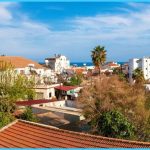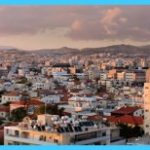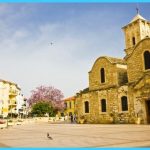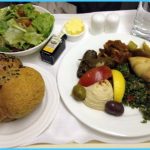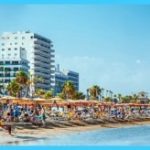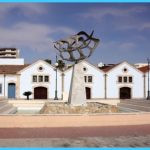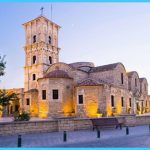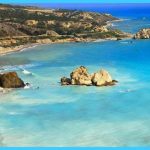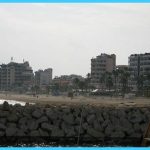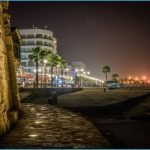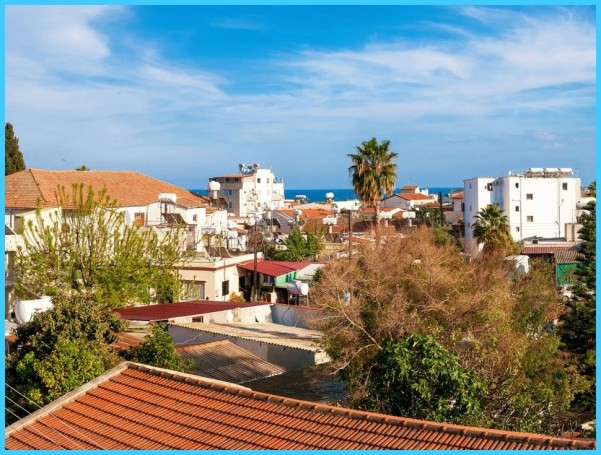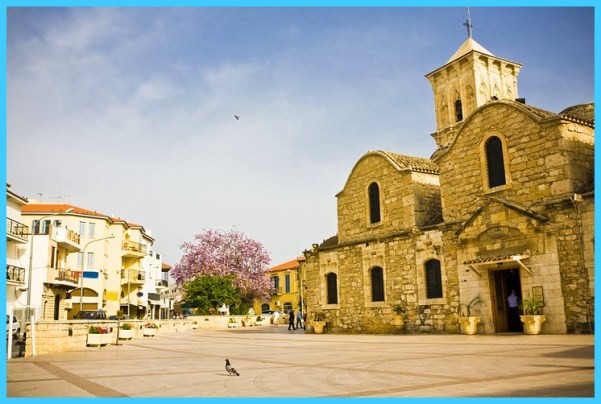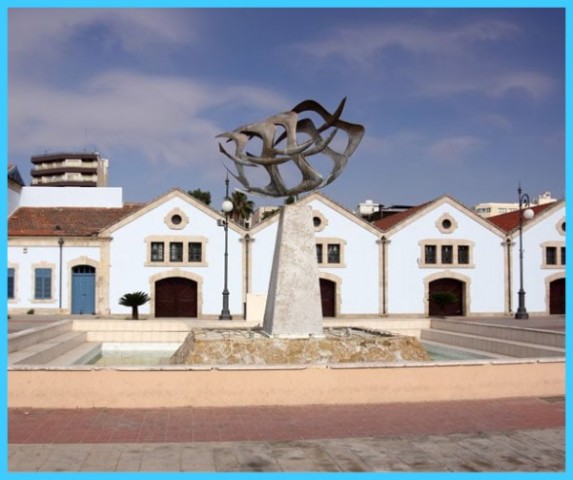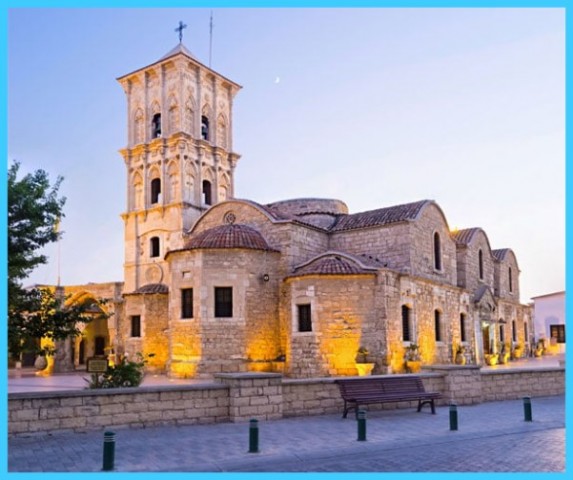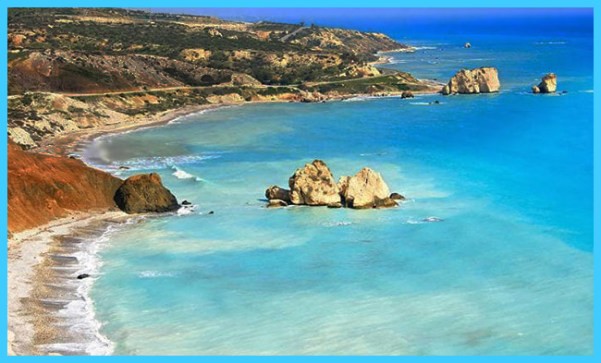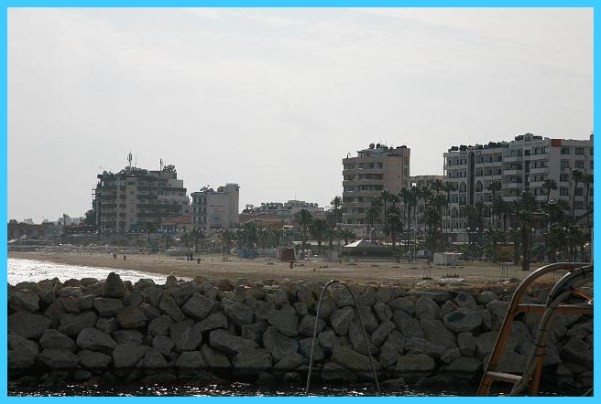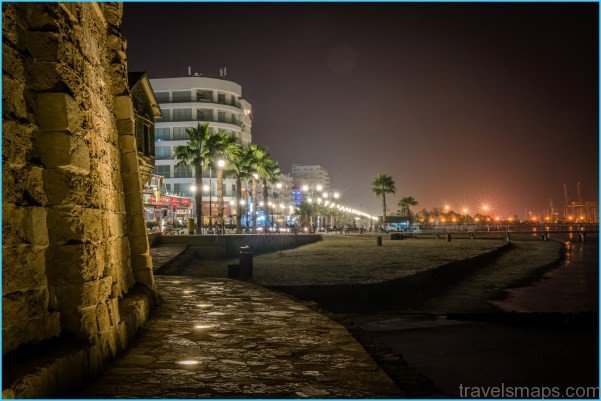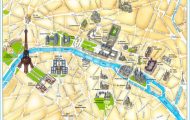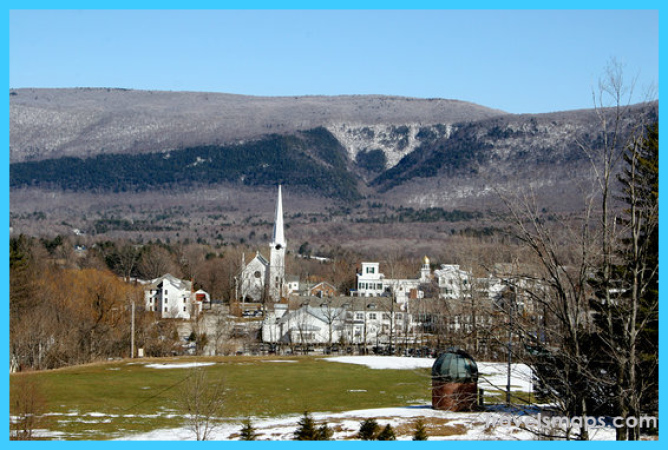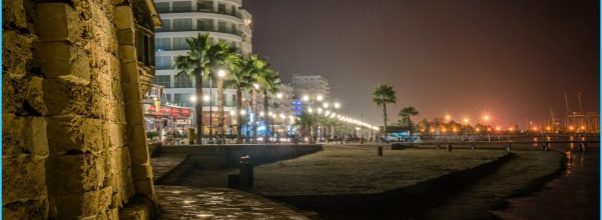
CHURCHES AND MONASTERIES
Church of Agios Lazaros
The church of Agios Lazaros. Once you find yourself close to the church of Agios Lazaros, you are seized by awe, mainly because here are found the relics of Agios Lazaros, the beloved friend of Christ. Agios Lazaros was forced, after his miraculous resurrection, to seek shelter at Kitium, now Larnaka. According to tradition, he became the first bishop of Kitium and the first church dedicated to him was built in order to serve the needs of the small population of Kitium at the time. The reconstruction of the church was undertaken by the emperor of Byzantium, Leon VI the Wise, around 890 A.D. He sent money as well as skilled workmen to build the Byzantine church we can see today with the agreement to receive the relics of St. Lazarus, which had been found in a marble sarcophagus in the original church. The actual church was subsequently extended and renovated. In old days the church functioned as a monastery as well. On the left side of the church there is a small cemetery where merchants of foreign religions, diplomatic officials and others were buried. In 1750 the arcade appeared to the south of the church. The dead used to be buried in its floor, as is obvious from the tombstones found across the southern wall of the church, covered with various inscriptions in Greek and in other languages. In 1857, the enormously high bell-tower was built. The church of Agios Lazaros is in fact three-aisled with three domes on top of the middle aisle. The gilted iconostasis, an 18th century work, is a masterpiece of art. An icon which demands particular attention on behalf of the visitor is that of Agios Lazaros, work of 1738. Another icon, belonging to the school of Crete, dated 1717, is that of Agios Georgios, depicting scenes from his martyrdom. On the left side of the bema there is a small altar, which was used by the Latins. Beneath the bema, there is a cemetery with some sarcophagi. It is said that in one of these were discovered, in 1972, the relics of Agios Lazaros, a fact which confirms even more the presence of Agios Lazaros in Larnaka.
Agia Faneromeni Church. Beside, as well as above an underground carved tomb, on the right side of the main Larnaka- Kiti road, the contemporary church of Agia Faneromeni is situated. Agia Faneromeni church has nothing to show in particular. It is the underground tomb or the old chapel dedicated to Agia Faneromeni which attracts visitors. It is a tomb with two chambers, which communicate through a square door. The roof is composed of two enormous rocks placed upon other large ones, which constitute the walls of the edifice. A third vaulted underground room has recently been added as an extention to the ancient chambers. People attribute to this ancient cave magic and miraculous powers. Quite a few women who come here leave pieces of their clothes or plaits from their hair so that they themselves or their relatives be cured from diseases.
The Monastery of Agios Georgios Kontos. A first look at the church and the courtyard of Agios Georgios Kontos in Larnaka, betrays the existence of an old monastery, despite the fact that today it is just a parish church. It is situated on the right hand side of the main Larnaka-Nicosia road, as the visitor leaves the town of Zeno. The founding of the monastery is covered in total darkness and what we currently know about goes back to the end of the 18th century. A fresco found above the main entrance to the church, depicting the martyr on horseback next to the donor Hadjoikonomos Meletios, points out that the construction of the edifice began in 1833 and was completed in 1834. The gilted iconostasis of the church is noticeable because of its reliefs and its 19th century icons. Agios Georgios Kontos is the protector of sowing and harvest. Moreover, he is the protector of children, especially those who face difficulties in walking. This accounts for the fact that mothers dedicate their children’s shoes to the saint and leave them at the forecourt of the church, hoping he will help them to walk soon.
Larnaca 2018: Best of Larnaca, Cyprus Tourism
OTHER PLACES OF INTEREST
The Marina of Larnaka
The Marina of Larnaka, close to the palm trees of the town, hosting around two hundred crafts of all types, has been functioning since 1976. A breakwater composed of massive limestone rocks surrounds the greatest part of the marina, especially from the west and the south, offering protection to the crafts during the days of rough sea in water. The colourful crafts with their upright masts, the platforms, the piers, the impressive breakwater as well as other auxiliary constructions, including the pub and the restaurant, constitute a special and picturesque corner of Larnaka.
Larnaca City – Local Travel Information and City Guide Photo Gallery
Foinikoudes (Date Palms). For decades the Foinikoudes (date palms) along the sea front of Larnaka, particularly at a distance between the marina and the fort, constitute the trade mark of Larnaka. The Municipality of Larnaka has transformed this particular part of Larnaka by establishing pavements, lamp-brackets, tiled-floor, “islands” of green, fountains, etc.
Larnaka and around Guide | Cyprus Travel
The fishing shelter of Larnaka is to be seen on your left, as you go across the main road from the marina of the town towards Makenzey beach. Two enormous breakwaters with an opening on their eastern side have been constructed on the west coast of Larnaka in order to create the biggest fishing shelter of the island. Hospitality is offered, nowadays, to about a hundred and forty crafts, employing more than three hundred people.
The Larnaka Salt Lake. The Larnaka-Kiti road divides the Larnaka Salt Lake into two sections. The largest one, which is simultaneously the most impressive and the most enchanting, is the one found on the right hand side. If you visit the Salt Lake in the summer you will usually find it all dried up. You will see an enormous layer of salt covering its bottom. In the old days part of the salt production used to be exported to other countries. If, however, you visit the Salt Lake in winter, then the picture is entirely different. The lake is filled with water in which colours, shadows and shapes are reflected. Different kinds of migratory birds, especially ducks and flamingoes, arrive from the cold countries of the North and embellish, with their colour and presence, this beautiful and unique wetland. The Larnaka Salt Lake constitutes a rare geomorphological phenomenon. The entire basin of the lake is a few metres under the surface of the sea. Therefore, the water from the sea next to the airport passes through the permeable rocks of the area and fills up the salt lake. This happens in winter, while in the summer there is no water, because of the high evaporation. The salt which is diluted in the water, settles at the bottom of the lake and creates a small layer of salt.
Foinikoudes (Date palms)
Makenzey Beach. Further up the fishing shelter of Larnaka, towards Larnaka International Airport, where the sandy beach continues, you find many coffee shops, restaurants, tavernas and small hotels, all close to or on the beach. You can enjoy the Makenzey beach, which got its name from a British person called Makenzey, the first to have built, just after the second world war, a small restaurant in the area. In the summer thousands of people from Larnaka and Nicosia inundate the beach and rejoice in its cool waters. In winter, especially on sunny days, many people come over here to take a walk along the sandy beach and have lunch in the restaurants at the seashore.
The International Airport was constructed in February 1975 at the site of the old airport of Larnaka(set up in 1936), next to the Salt Lake. A few months after the Turkish invasion, when operation of the Nicosia International Airport was disrupted, in order to avoid the isolation of Cyprus from the rest of the world, the government turned its attention towards Larnaka. In the beginning the runway and the various buildings, all limited in space, were constructed to serve the airport’s most urgent needs. Later on, they were all extended and modern installations were set up, so that all types of aircrafts can be served.
Sport grounds and stadia of Larnaka. The stadium (G.S.Z.) has a capacity of 10,000 spectators, while the stadium of Antonis Papadopoulos can host 9,000 spectators. Both cater for football and athletics. The communal center of Larnaka has a capacity of 850 spectators and is mainly used for basketball, handball, volleyball, rhythmic and olympic gymnastics as well as other events. It includes also a swimming pool with a capacity of 150 spectators.
Maybe You Like Them Too
- The Best Places To Visit In North America For Christmas
- Faro Travel Guide: Map of Faro
- Mumbai Travel Guide For Tourists: Map Of Mumbai
- Travel to Budapest
- Thailand Travel Guide for Tourists: The Ultimate Thailand Map

